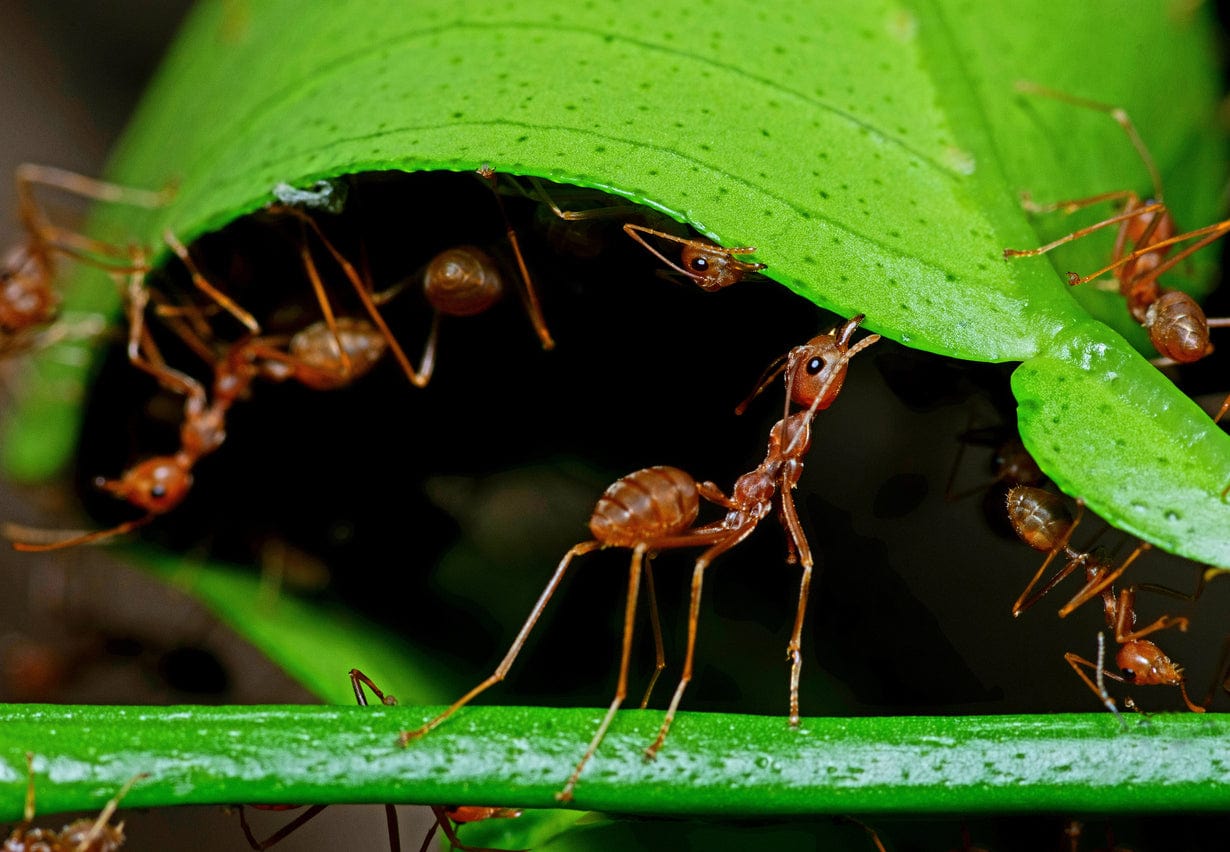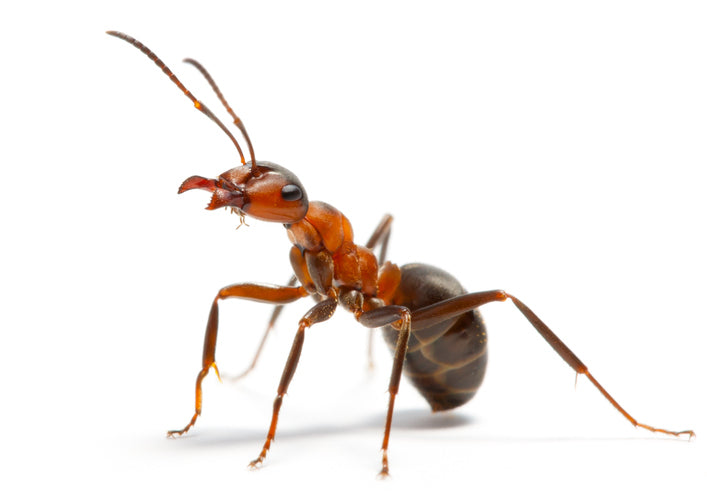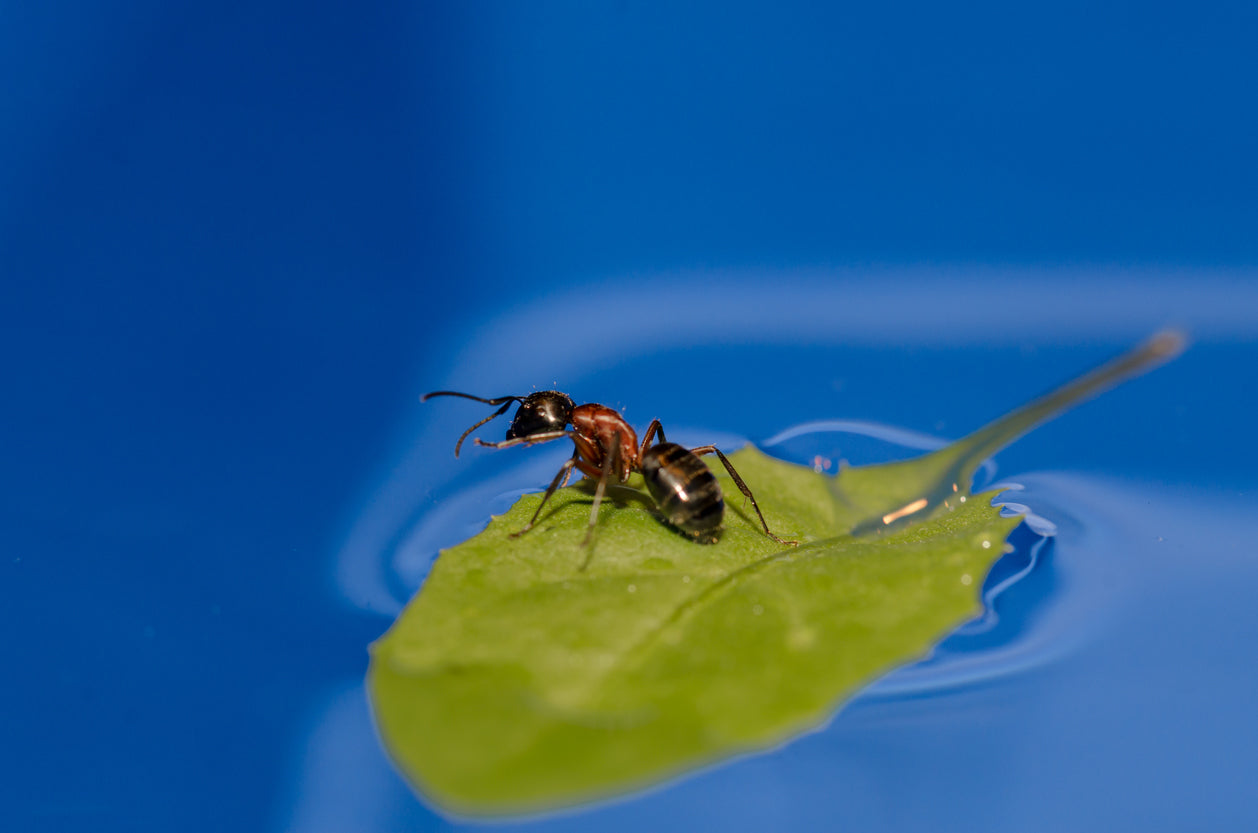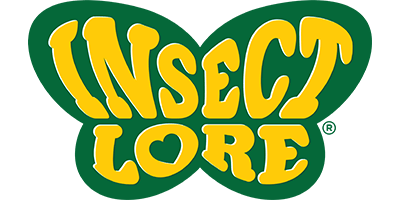Add description, images, menus and links to your mega menu
A column with no settings can be used as a spacer
Link to your collections, sales and even external links
Add up to five columns
Add description, images, menus and links to your mega menu
A column with no settings can be used as a spacer
Link to your collections, sales and even external links
Add up to five columns

5 Fascinating Ant Colony Behaviors
By Spencer McManamna March 25, 2024 12 min read
In this article you'll learn all about our industrious ant friends and how they accomplish the seemingly superhuman task of creating and managing their colonies. Dig into the fascinating world of colony "superorganisms"- how they forage, migrate, defend themselves, manage supplies and more!
Ant Colonies Behave as a Superorganism
A superorganism refers to a complex system composed of multiple organisms working together in a highly integrated and coordinated manner, often to achieve common goals or functions. These organisms, typically of the same species, collaborate to form a cohesive unit that functions as a single entity.
Superorganisms are commonly observed in social insects like ants, bees, and termites, where individual members perform specialized roles that contribute to the overall success and survival of the colony. This concept highlights the synergy and interdependence among organisms within a collective structure, emphasizing emergent properties that arise from their interactions.
Collective behavior in the context of ant colonies refers to the coordinated actions and interactions of individual ants that result in the emergence of complex, organized patterns at the colony level. These behaviors are governed by decentralized mechanisms and do not rely on central control or direction from a single individual. Instead, they arise from simple rules followed by each ant, leading to sophisticated group dynamics.
Collective Behavior
Examples of collective behavior in ant colonies include foraging, nest construction, defense, and colony migration.
- Foraging ants, for instance, communicate information about food sources through chemical trails, allowing other ants to follow and exploit these resources efficiently.
- Nest construction involves cooperative efforts by multiple ants to build and maintain the colony's habitat. Defense behaviors, such as forming living barriers or swarming intruders, protect the colony from threats.
- During colony migration, ants collectively relocate to new nesting sites, demonstrating coordinated movement and decision-making.
Collective behavior in ant colonies showcases the remarkable abilities of these social insects to solve complex problems, adapt to environmental changes, and thrive as cohesive societies without central control!
Individual Behavior
Individual ant behaviors are often focused on the benefit of the entire colony due to the highly cooperative and interdependent nature of ant societies. This collective focus arises from evolutionary pressures that favor traits and behaviors promoting the survival and reproductive success of the colony as a whole, rather than individual ants. Several key mechanisms contribute to this phenomenon:
Division of Labor
Ant colonies exhibit a division of labor, where individuals specialize in specific tasks according to their age, size, morphology, and physiological characteristics. Tasks such as foraging, nest maintenance, brood care, defense, and reproduction are distributed among different castes of ants. This specialization ensures that all essential functions of the colony are fulfilled efficiently, maximizing overall productivity and survival.
Communication
Ants communicate through a variety of mechanisms, including pheromones, tactile signals, and even auditory cues. These communication systems facilitate the coordination of activities within the colony, allowing ants to share information about food sources, nest locations, potential threats, and other important resources. By sharing information, ants can collectively make decisions that benefit the entire colony, such as optimizing foraging routes or coordinating defense efforts.
Cooperative Care
Ants engage in cooperative care of the colony's brood, ensuring the survival and development of future generations. Ant workers invest significant time and energy in feeding, grooming, and protecting the eggs, larvae, and pupae. This investment in offspring care contributes to the long-term fitness of the colony by maintaining a healthy population of workers.
Resource Sharing
Ants within a colony share resources such as food, water, and nesting materials through trophallaxis (mouth-to-mouth feeding) and other forms of cooperative behavior. This ensures that all members of the colony have access to essential resources, even in times of scarcity, and helps maintain the health and productivity of the entire population.
Waste Management Behavior in Ant Colonies
Living in large groups can increase the occurrence of parasites and infections in ant colonies due to several interconnected factors: increased contact rates, high density and aggregation, limited genetic diversity, and food sharing. Ant colonies operate as interconnected social networks where individuals interact through complex communication systems.
While these networks facilitate cooperation and collective behaviors, they also provide pathways for the spread of parasites and pathogens. Infected individuals can transmit parasites or pathogens to healthy colony members through direct contact or by contaminating shared resources such as food or nesting material.
Ant colonies employ various strategies to mitigate these risks, such as grooming behaviors, immune responses, and behavioral defenses against parasites and pathogens. However, the dynamic interplay between social structure, environmental factors, and disease dynamics shapes the susceptibility of ant colonies to infections and influences their overall health and survival.
Ants have evolved sophisticated mechanisms to maintain cleanliness and hygiene within their nests, which helps to prevent the buildup of food waste, bacteria, and fungi.
Grooming Behavior
Ants engage in extensive grooming behaviors to remove dirt, debris, and microorganisms from their bodies. Grooming not only keeps the ants themselves clean but also helps to prevent the spread of pathogens within the colony. Ants use their mandibles and legs to clean themselves and each other, removing any foreign particles or microorganisms that may be present.
Carrying Away Waste
Ants actively remove food waste, dead organisms, and other debris from the nest environment. They carry these items away from the nest and deposit them in designated waste disposal areas, often located some distance away. By removing potential sources of contamination, ants reduce the risk of bacterial and fungal growth within the nest.
Antimicrobial Secretions
Some ant species produce antimicrobial compounds that help to inhibit the growth of bacteria and fungi within the nest. These secretions may be applied to nest surfaces or incorporated into nest materials to help maintain a clean and hygienic environment. Antimicrobial compounds produced by ants have been found to exhibit a wide range of antibacterial and antifungal properties, emphasizing the ecological importance of ants.
Nest Maintenance
Ants actively maintain and repair their nests to prevent the accumulation of debris and to ensure structural integrity. Workers may remove old nest material and replace it with fresh material to create a clean and suitable environment for brood rearing and food storage. Regular nest maintenance helps to minimize the buildup of food waste and other potential sources of contamination.
Chemical Communication
Ants use chemical signals known as pheromones to communicate with nestmates and coordinate collective behaviors. Pheromones play a crucial role in regulating hygiene behaviors within the colony, such as grooming, waste removal, and nest maintenance. By detecting and responding to these chemical signals, ants can efficiently coordinate their efforts to keep the nest clean and free from contamination.
Overall, ants employ a combination of behavioral, physiological, and chemical mechanisms to remove potential sources of food waste, bacteria, and fungi from their nests. These strategies help to maintain a clean and hygienic environment, which is essential for the health and well-being of the colony.
Necrophoresis is a term used to describe the behavior observed in social insects, particularly ants, where dead colony members are removed from the nest and deposited in a designated area away from the main living quarters. This behavior helps to prevent the spread of pathogens and maintain cleanliness within the colony.
Ants that specialize in necrophoresis are often referred to as "undertaker ants" or "graveyard ants." These individuals are responsible for locating and carrying dead ants or other organic matter to specific disposal sites within or outside the nest. Undertaker ants typically exhibit specialized behaviors and physiological adaptations that facilitate the removal and handling of dead colony members.
Necrophoresis is a crucial behavior observed in ant colonies that contributes to the overall hygiene and well-being of the colony by preventing the spread of pathogens and maintaining cleanliness within the nest. Undertaker ants play a vital role in this process, efficiently removing dead individuals and disposing of them in designated areas to minimize the risk of disease transmission.
Foraging Behavior in Ant Colonies
Forager ants are a type of worker ant tasked with the crucial role of gathering food and other essential resources for the colony. Their primary duty is to search for, locate, and procure food items such as seeds, fruits, nectar, insects, or other organic matter that can sustain the colony's nutritional needs. Forager ants play a vital role in ensuring the survival and growth of the colony by providing a steady supply of resources.
The Importance of Water
Water is an incredibly important resource for ants as they need it for hydration, food processing, metabolization and to keep their nest healthy. Ants have evolved various behavioral adaptations to obtain and conserve water in their environments. Some ant species collect moisture from dew, rainwater, or plant exudates to supplement their hydration needs. Others store water within their bodies or nest structures to ensure a constant supply during dry periods.
What is Desiccation?
Desiccation refers to the process of drying out or the removal of moisture from an organism or its environment. For ants, desiccation poses a significant risk when they venture outside the nest in search of food, especially in arid or dry environments. Because of this, ants' foraging behavior often focuses on finding the shortest path to food to maximize efficiency and minimize energy expenditure.
Ants and Chemical Trails
Once a scout ant discovers a food source, it returns to the nest and lays down a chemical trail, typically composed of pheromones, leading from the nest to the food. The trail acts as a guide for other colony members, allowing them to follow the shortest path to the food source.
As more ants follow the chemical trail to the food source and return to the nest with food, the concentration of pheromones on the trail increases. Ants tend to preferentially follow trails with higher pheromone concentrations, reinforcing the shortest and most direct paths to the food source. Outgoing ants will not leave their nests to search for food until they've come into contact with enough foragers returning with food. More foragers returning with food indicates food is readily available and nearby, which means less search time, which equals less risk of desiccation.
Chemical Defenses of Ant Colonies
Chemical Defenses in ants refer to the various compounds and substances they produce or utilize for defense against predators, competitors, and pathogens. Ants have evolved an array of chemical defenses, including pheromones, venom, and formic acid, which play essential roles in communication, deterrence, and protection within their colonies. Here's how these chemical defenses function:
Pheromones
Pheromones are chemical signals that ants use to communicate with each other and coordinate various colony activities. Ants release pheromones from specialized glands located throughout their bodies, and these chemicals can serve different purposes.
For defense, ants may release alarm pheromones when they detect threats or encounter danger. Alarm pheromones can trigger a rapid response from nestmates, alerting them to the presence of danger and mobilizing collective defense behaviors. By releasing alarm pheromones, ants can effectively communicate danger signals and coordinate defensive actions to protect the colony.
Venom
Some ant species possess venom glands and specialized stingers or mandibles that they use to inject venom into potential threats or prey. Ant venom typically contains a mixture of toxic compounds that can immobilize or incapacitate adversaries.
When threatened, ants may sting or bite intruders and inject venom to defend themselves and their colony. Venomous ants often exhibit defensive behaviors such as swarming, biting, or spraying venom to deter predators and protect their nestmates.
Formic Acid
Formic acid is a potent chemical compound found in the venom of many ant species, particularly those in the Formicinae subfamily. Ants can spray or excrete formic acid as a defensive mechanism when threatened or attacked. Formic acid has irritant and corrosive properties, causing pain, inflammation, and tissue damage to predators or intruders.
Ants may spray formic acid from specialized glands located in their abdomens or release it through stingers or bite wounds. The presence of formic acid acts as a deterrent to predators and can help ants fend off threats and protect their colony.
Physical Defenses of Ant Colonies
Physical defenses refers to the mechanisms such as biting and stinging, which are used to deter predators, defend the colony, and protect nestmates.
Biting
Many ant species have mandibles adapted for biting and cutting, which they use as a primary means of defense. Ants can deliver powerful bites to adversaries, causing pain, injury, or even death. Biting serves as a deterrent to predators and intruders, allowing ants to protect themselves, their nestmates, and their resources. Some ant species, such as army ants, have specialized soldier castes with enlarged mandibles specifically adapted for defense and combat.
Stinging
Certain ant species possess venom glands and stingers, which they use to inject venom into threats or adversaries. Ant venom can cause pain, inflammation, and tissue damage to predators, making stinging an effective deterrent against potential attackers.
Ants typically sting when provoked or threatened, using their stingers to defend themselves, their colony, and their resources. Stinging ants may also release alarm pheromones to signal danger and mobilize collective defense behaviors within the colony.
Collective Defenses
Collective defenses in ants refer to coordinated behaviors and actions undertaken by multiple individuals within a colony to protect against threats, deter predators, and ensure the safety and security of the nest. These defenses leverage the strength of the colony as a unified entity, with ants working together to repel intruders, defend resources, and maintain colony cohesion. Two common examples of collective defenses in ants are swarming and blocking.
Swarming
When faced with a threat or disturbance, ants may respond by swarming en masse to overwhelm and intimidate the intruder. Swarming involves large numbers of ants mobilizing and converging rapidly on the source of the disturbance, creating a visually striking and intimidating display. Swarming can serve several purposes, including disorienting predators, distracting attackers, and driving intruders away from the nest. By swarming, ants can effectively deter threats and protect their colony from harm.
Blocking
Ants may use their bodies to block entrances or pathways leading to the nest, preventing intruders from gaining access. Blocking behaviors typically involve ants forming living barriers or barricades by linking their bodies together in a dense cluster. This physical obstruction impedes the movement of potential threats and forces them to confront the collective strength of the ant colony. Blocking can be an effective defensive strategy, particularly against larger predators or competitors that pose a direct threat to the nest.
Collective defenses in ants rely on cooperation, communication, and division of labor among colony members to coordinate effective responses to threats. By working together and leveraging the collective power of the colony, ants can successfully deter predators, defend their resources, and ensure the survival and prosperity of the nest.
Defensive Methods
Defensive methods can even vary from species to species. Fire ants use the stinger on their abdomen to inject a painful venom. Army ants use their mandibles to bite, and Kangaroo Island ants even feign death to deter predators, a process known as thanatosis.
Migratory Behavior
Ant colony migrations, also known as emigrations, involve the relocation of the entire colony from one nesting site to another.
In some ant species, colony migrations may occur infrequently, perhaps once every few years or even decades. These migrations often coincide with changes in environmental conditions, such as seasonal fluctuations in temperature or rainfall, or when the current nesting site becomes unsuitable due to overcrowding, resource depletion, or predation pressure. Such migrations typically involve a significant investment of time and energy by the colony members and are undertaken to ensure the long-term survival and reproductive success of the colony.
On the other hand, certain ant species may exhibit more frequent colony migrations, especially in response to disturbances or disruptions in their habitat. For example, ants inhabiting dynamic or unstable environments, such as floodplains or disturbed habitats, may need to relocate frequently to avoid flooding, soil erosion, or habitat destruction. Similarly, ants that nest in temporary or ephemeral habitats, such as rotting logs or transient plant structures, may undergo frequent migrations as their nesting sites degrade or decay over time.
In general, the frequency of ant colony migrations reflects the adaptive strategies employed by each species to cope with changing environmental conditions and maintain colony viability. Some species may prioritize stability and long-term residency in a single nesting site, while others may adopt a more nomadic or opportunistic lifestyle, continually seeking out new nesting opportunities as they arise.
Tandem Running
Tandem running is a cooperative behavior observed in some ant species during colony migrations, where a scout ant leads a follower ant from the old nest site to the new nest site. This process involves physical contact between the scout and follower ants, with the scout guiding the follower along a route between the two nest sites. Tandem running plays a crucial role in the success of ant colony migrations by facilitating the transfer of information about the new nest location and ensuring the efficient relocation of the entire colony.
During tandem running, the scout ant leads the follower ant by walking in front of it and maintaining physical contact through antennation (touching antennae). The scout ant navigates the follower along the migration route, using landmarks, pheromone trails, or visual cues to guide the way. The follower ant trails closely behind the scout, relying on tactile and chemical signals to stay oriented and follow the correct path.
Advantages of Tandem Running in Ant Colonies
Tandem running confers several advantages that contribute to the success of ant colony migrations:
Information Transfer
Tandem running allows the scout ant to communicate information about the new nest location to the follower ant in real-time. This direct transfer of information ensures that colony members are aware of the new nesting site and can navigate to it efficiently.
Orientation and Navigation
Tandem running helps follower ants orient themselves and navigate along the migration route with precision. By following the lead of the scout ant, follower ants can avoid getting lost or disoriented during the migration process and reach the new nest site safely.
Coordination and Cohesion
Tandem running promotes coordination and cohesion within the colony by keeping colony members together and moving in the same direction. By following the lead of the scout ant, follower ants remain synchronized with the rest of the colony and contribute to the collective effort of the migration.
Efficient Movement
Tandem running ensures the efficient movement of colony members between the old and new nest sites. By guiding follower ants along the migration route, scout ants help minimize delays and ensure that the entire colony relocates swiftly and smoothly.
Overall, tandem running is a critical component of ant colony migrations, enabling efficient communication, navigation, coordination, and cohesion among colony members. By working together in tandem, ants can successfully relocate their nests to new locations and adapt to changing environmental conditions, ensuring the long-term survival and success of the colony!
Related products
Also in Ants

The Ultimate Guide to Raising Harvester Ants
December 01, 2025 10 min read
Meet the Harvester Ant! This guide will walk you through the process of raising your very own, from setting up your ant farm to feeding, care, and troubleshooting. Whether you’re a teacher running a classroom science project or a parent starting a fun nature activity at home, this is everything you need to know to raise a thriving colony.

What Ants Can Teach Us About Working Together
March 19, 2025 6 min read
Just as ants collaborate, relying on communication and coordination to complete complex tasks, humans thrive when working together, each individual bringing unique skills and perspectives to the table. In this article you will learn all about how ants work together, and what it can teach us about teamwork!

How Long Can Ants Live Without Food?
November 04, 2024 4 min read
You may know about the wide variety of foods ants like to munch on, but have you ever wondered how long they can go without a meal? The answer may surprise you! If you've got an appetite to learn more, let's dig in.

Enter Your Voucher Code Below
If you are experiencing difficulty redeeming your voucher on your desktop, please use a mobile device for a better redeeming experience.

We are unable to combine redemption fees. If you are redeeming 1-5 voucher codes, please complete separate purchases through our website for each voucher. If you are redeeming 6+ vouchers, please email us at customerservice@insectlore.com with your voucher codes and shipping address and we'll send you a custom invoice for payment.
Thank you for Redeeming your voucher!
You redeemed a $title

Don't miss this special one Time Offer.
Check the Box to Add this Special Offer to your Cart

Don't miss this special one Time Offer.
Check the Box to Add this Special Offer to your Cart
It looks like you are an Insect Lore UK/EU customer! You are visiting the Insect Lore USA website.
Click Insect Lore UK/EU website to be redirected to insectlore.co.uk.




